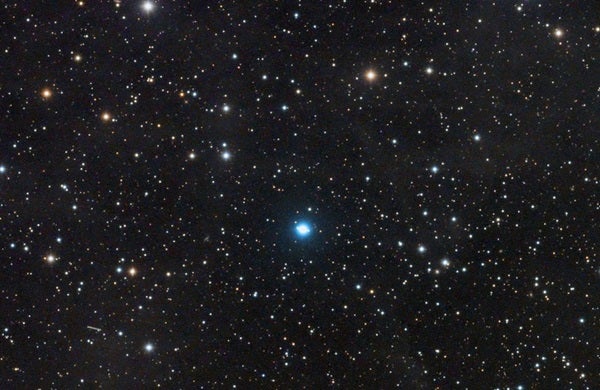The Saturn Nebula (NGC 7009) is a planetary nebula in the constellation Aquarius the Water-bearer. While to a casual viewer its common name may seem misplaced, it comes from the thin lobes on either end of its disk. These projections, called ansae (Latin for “handles”), make this nebula look like Saturn, complete with rings, in large scopes. The ansae are actually gas that the nebula has ejected in opposite directions. This fascinating object lies some 5,000 light-years away.
The Saturn Nebula resides slightly more than 1° west of the magnitude 4.5 star Nu (ν) Aquarii, or just slightly southeast of the midpoint of a line from magnitude 2.9 Sadalsuud (Beta [β] Aquarii) to magnitude 3.1 Dabih (Beta Capricorni).
Because NGC 7009 glows at magnitude 8, it’s easy to observe through an 8-inch or larger telescope. Your best chance to unlock some details is to use magnifications above 200x — or at least the highest that sky conditions at your observing site allow.
First, try to spot the central star. This magnitude 11.5 point of light sits at the center of NGC 7009. Once a hydrogen-fusing sun like our own, the star is now a white dwarf.
Once you find the central star, take a look at the overall shape of this planetary, which definitely appears oval. The long axis of the disk spans 25′. Each ansa protrudes from the disk another 2′. If you are viewing through a 14-inch or larger scope, examine the ends of the ansae and look for slightly fainter round regions.
Make sure to explore Astronomy’s full list of 101 cosmic objects you must see. New entries will be added each week throughout 2022.










